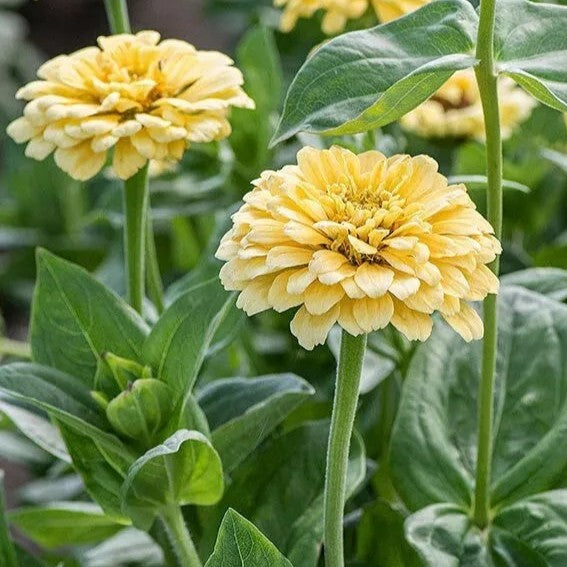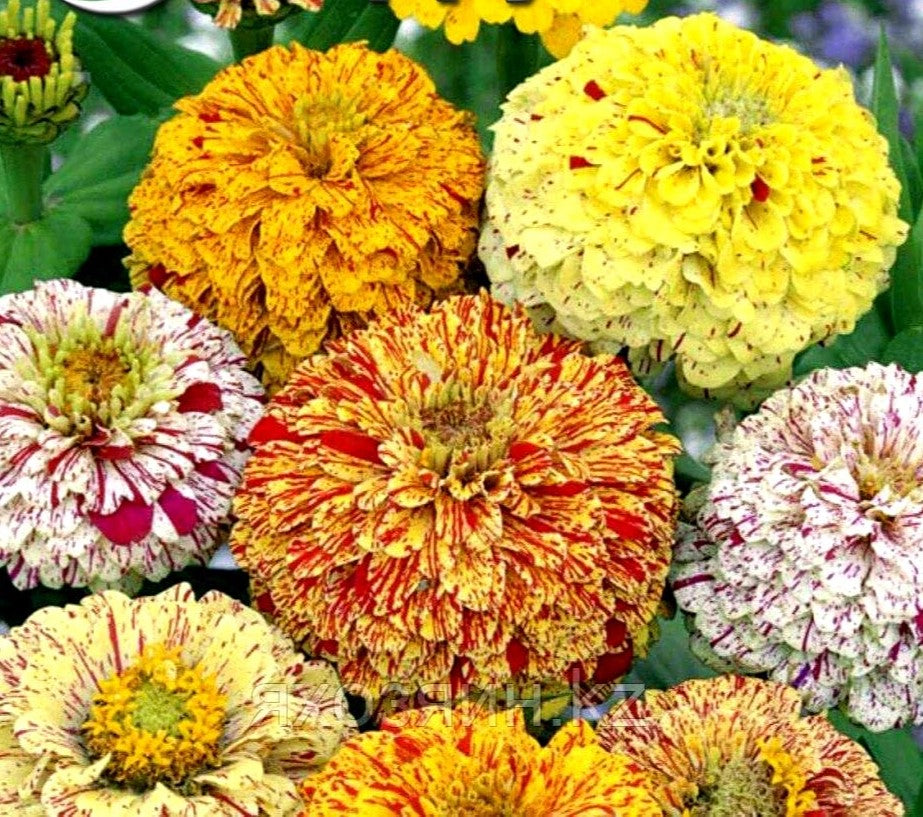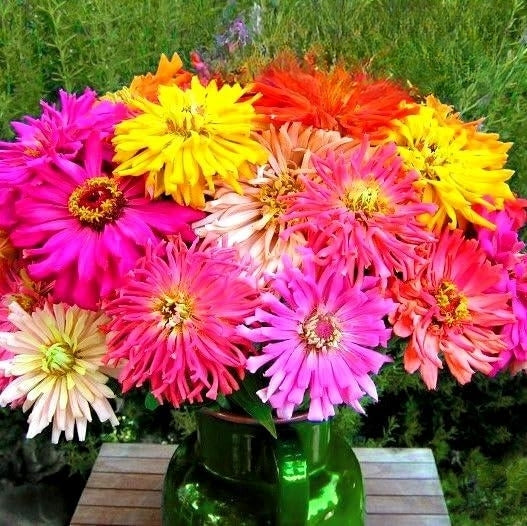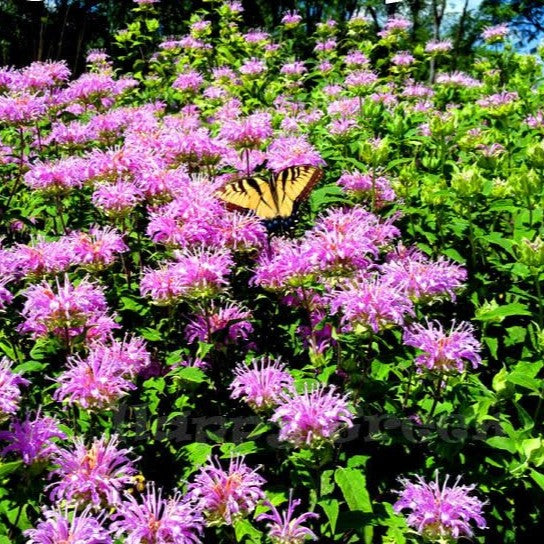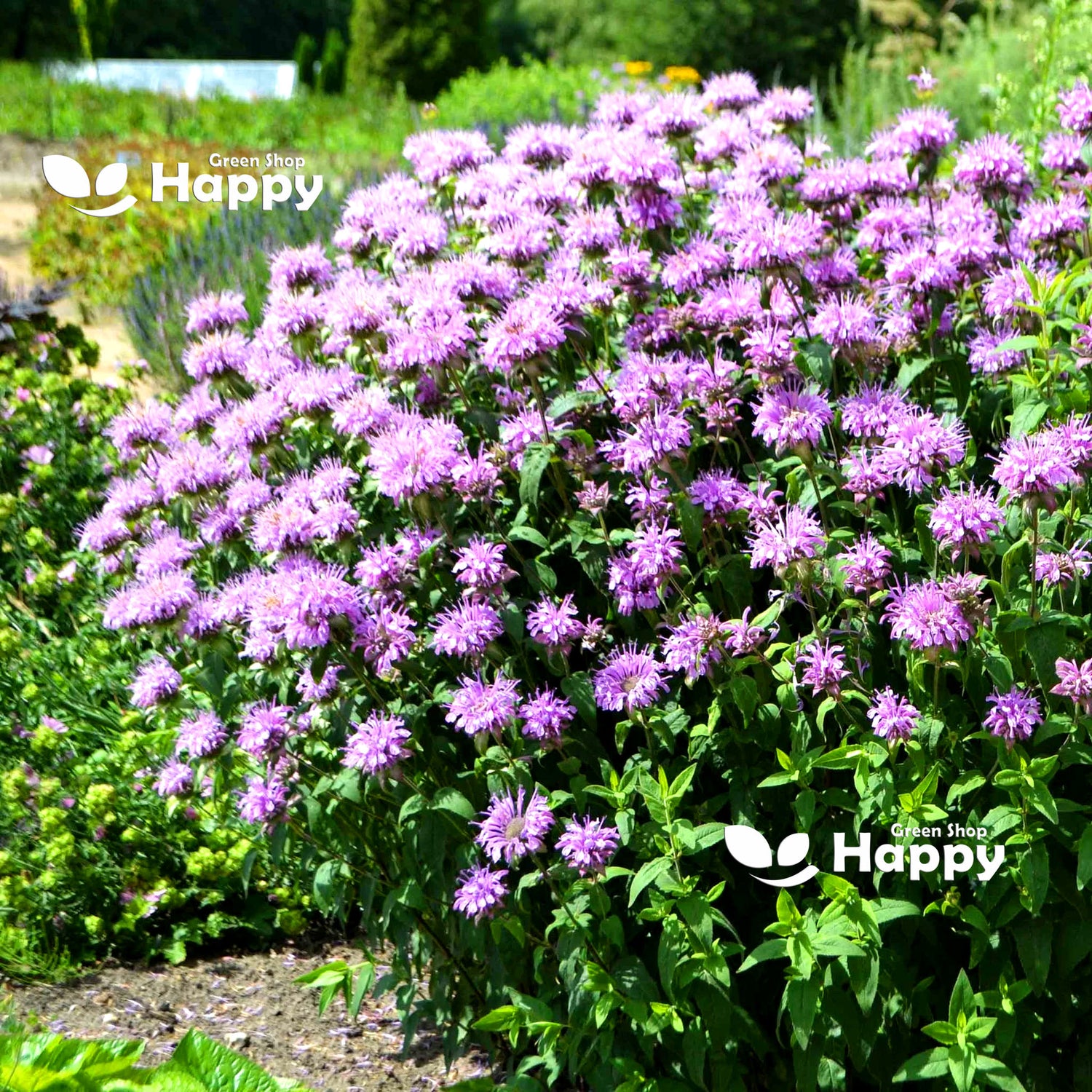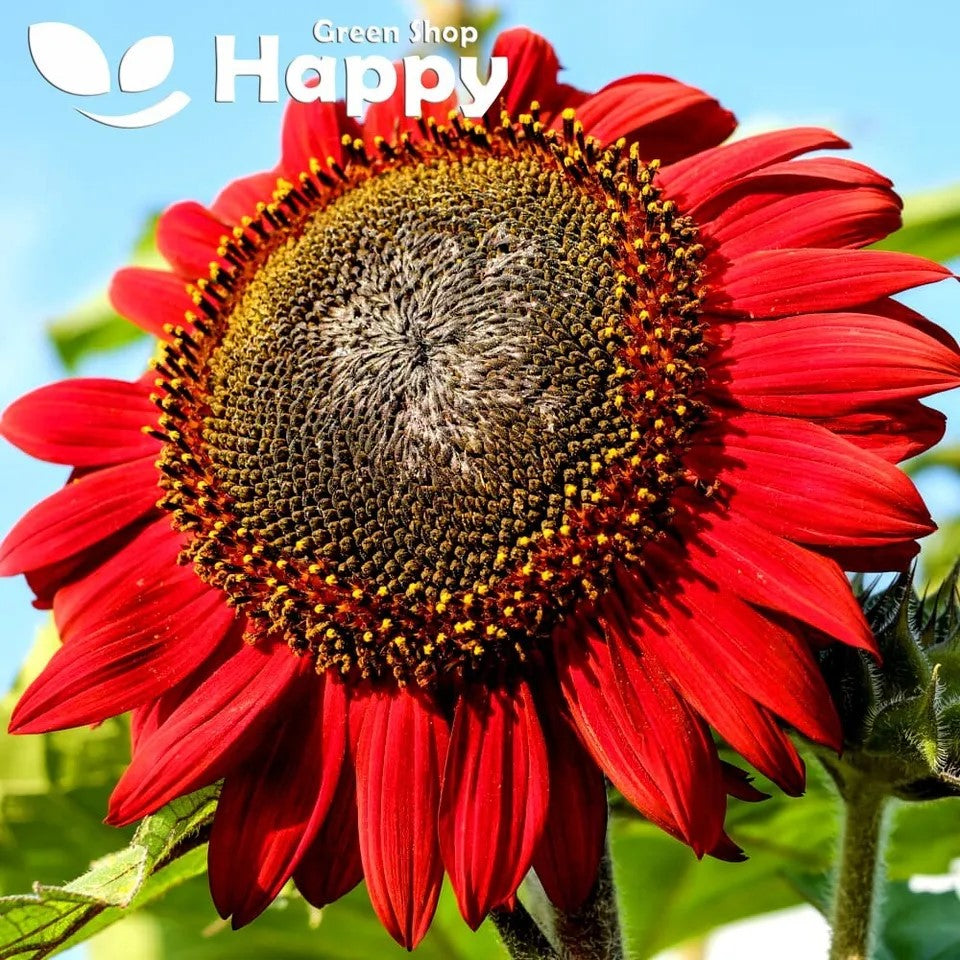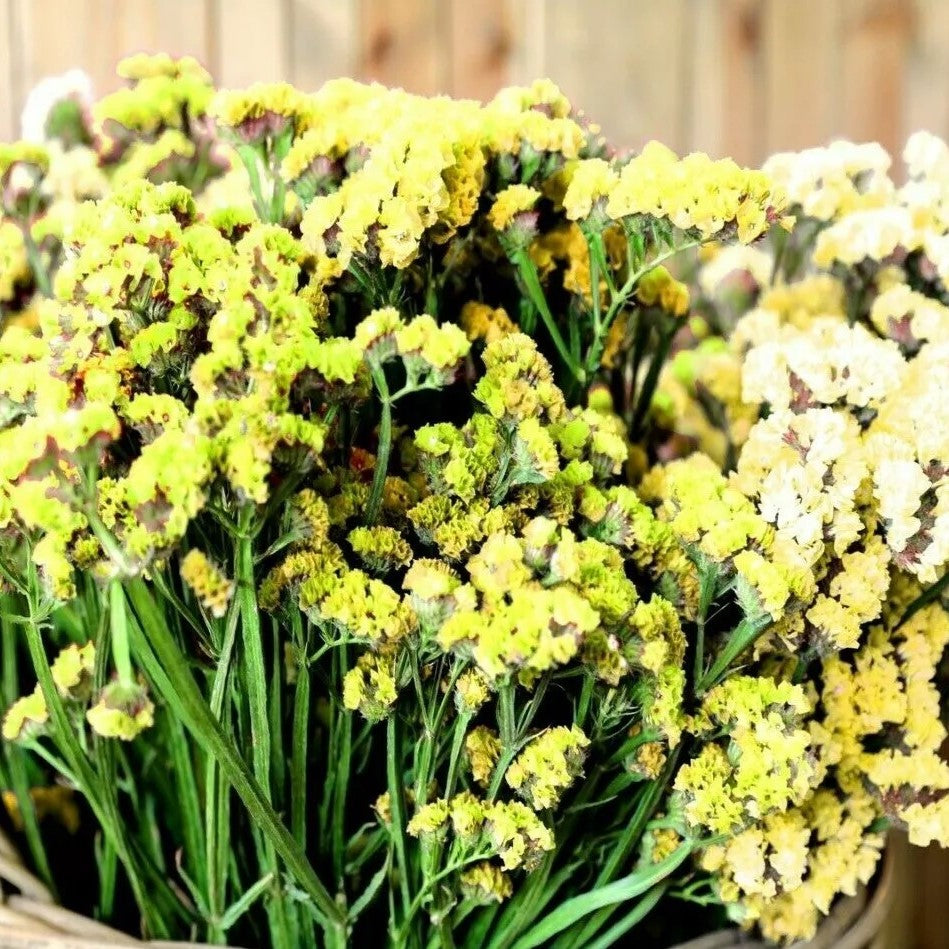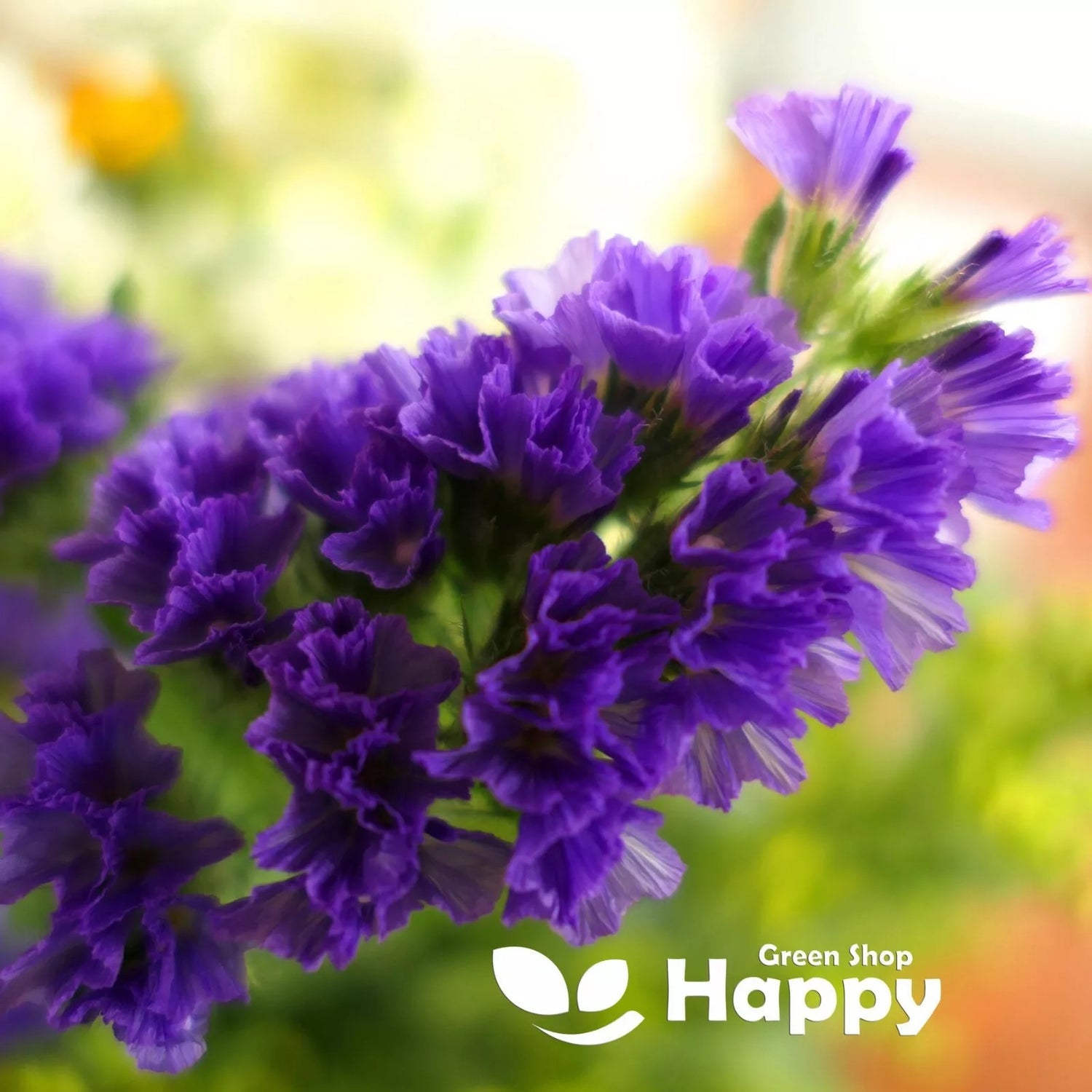Sort by:
69 products
69 products
Discover the uniqueness
Experience the delightful flavor and health benefits of Herbal Blends.
Zinnia Dahlia 'Bonbon Mix' – Seeds
(Zinnia elegans)
Zinnia Dahlia 'Bonbon Mix' is a vibrant collection of dahlia-flowered zinnias producing large, fully double blooms in a mix of cheerful colours, from soft pinks and creams to bold reds and oranges. These compact, bushy plants provide a long season of flowering, making them ideal for borders, containers, and cutting gardens. Their striking blooms attract butterflies and add a splash of colour to any summer garden.
Key Features
-
Type: Half-hardy annual
-
Height: 60–80 cm
-
Spread: 30–40 cm
-
Flowering: July–October
-
Position: Full sun
-
Soil: Well-drained, fertile soil
Ideal For
-
Cutting gardens and bouquets
-
Summer beds and borders
-
Container planting
-
Pollinator-friendly gardens
Sowing & Growing
-
Sow indoors: March–April at 18–22°C
-
Sow outdoors: May, after frost risk has passed
-
Germination: 7–14 days
-
Transplant/Thin: 30–40 cm apart
-
Deadhead regularly to prolong flowering
Zinnia 'Burpeeana Giants Mix' – Seeds
(Zinnia elegans)
Zinnia 'Burpeeana Giants Mix' is a spectacular blend of bold, fully double blooms reaching up to 12–15 cm across. This mix features an array of dazzling colours, from vibrant reds, pinks, and oranges to golden yellows and whites. The tall, sturdy plants make a striking display in the garden and provide excellent cut flowers. Heat-loving and easy to grow, these zinnias are perfect for a summer of nonstop colour.
Key Features
-
Type: Half-hardy annual
-
Height: 75–100 cm
-
Spread: 30–40 cm
-
Flowering: July–October
-
Position: Full sun
-
Soil: Fertile, well-drained
Ideal For
-
Cottage gardens
-
Bold, colourful borders
-
Summer bedding displays
-
Cut flower gardens
Sowing & Growing
-
Sow indoors: March–April at 18–22°C
-
Sow outdoors: May, after frost risk has passed
-
Germination: 7–14 days
-
Transplant/Thin: 30–40 cm apart
-
Remove spent blooms to encourage more flowers
Yellow Iris – Seeds
(Iris pseudacorus)
The Yellow Iris (Iris pseudacorus) is a striking perennial, known for its large golden-yellow blooms and elegant sword-like foliage. Naturally found along riverbanks and ponds, it thrives in moist to wet soil, making it a perfect choice for water gardens, bog gardens, or pond edges. In late spring to early summer, it produces showy flowers that attract pollinators and provide a beautiful contrast to lush greenery. Hardy and low-maintenance, this iris is both ornamental and beneficial for wildlife habitats.
Key Features
-
Type: Perennial, aquatic/marginal plant
-
Height: 80–120 cm
-
Spread: 40–60 cm
-
Flowering: May–July
-
Position: Full sun / partial shade
-
Soil: Moist, fertile; thrives in boggy or wet conditions
Ideal For
-
Pond edges, water features, and wetlands
-
Wildlife and naturalistic gardens
-
Cottage and perennial borders (in moist soil)
-
Attracting bees and butterflies
Sowing & Growing
-
Sow indoors/outdoors: Autumn–Spring
-
Pre-treatment: Seeds benefit from stratification (exposure to cold for 6–8 weeks) before sowing.
-
Germination: Can be slow and irregular (1–3 months).
-
Sow depth: Cover lightly with compost and keep moist.
-
Transplanting: Move seedlings to permanent positions when large enough, ensuring soil remains moist.
Wild Bergamot – 1,300 Seeds (Monarda fistulosa)
Wild Bergamot (Monarda fistulosa) is a hardy perennial known for its fragrant lavender-pink blooms and aromatic foliage. A favorite of pollinators, it attracts bees, butterflies, and hummingbirds, making it perfect for pollinator gardens, borders, and wildflower meadows. Easy to grow and low-maintenance, it provides long-lasting color and texture from mid-summer to early autumn.
Why Grow "Wild Bergamot"
-
Fragrant lavender-pink blooms
-
Aromatic foliage with medicinal and culinary uses
-
Attracts bees, butterflies, and hummingbirds
-
Hardy and low-maintenance perennial
Key Features
-
Type: Perennial (Monarda fistulosa)
-
Height: 60–90 cm
-
Flowering: July–September
-
Position: Full sun to partial shade
-
Uses: Pollinator gardens, borders, wildflower meadows, cottage gardens
Ideal For
-
Pollinator-friendly gardens
-
Cottage-style or naturalized borders
-
Wildflower meadows
-
Herbal and sensory gardens
Sowing & Growing
-
Sow indoors: February–April in trays
-
Sow outdoors: April–May directly in prepared soil
-
Germination: 10–20 days at 18–22°C
-
Thin seedlings to 30–40 cm apart
-
Prefers well-drained soil and full sun
-
Deadhead to encourage prolonged flowering
Wild Poppy Red – 20,000 Seeds (Papaver rhoeas)
Wild Poppy Red (Papaver rhoeas) is a classic annual producing vibrant scarlet-red blooms that create striking, naturalized displays. Perfect for meadows, borders, and large-scale plantings, it brings a splash of color to gardens from late spring to summer. Fast-growing, low-maintenance, and pollinator-friendly, it’s ideal for creating bold, natural landscapes.
Why Grow "Wild Poppy Red"
-
Bright, vibrant scarlet-red blooms
-
Fast-growing and easy to cultivate
-
Ideal for large-scale, naturalized plantings
-
Attracts bees and other pollinators
Key Features
-
Type: Annual (Papaver rhoeas)
-
Height: 60–90 cm
-
Flowering: May–July
-
Position: Full sun
-
Uses: Meadows, borders, large-scale plantings, pollinator-friendly gardens
Ideal For
-
Wildflower meadows and naturalized gardens
-
Bold borders and field displays
-
Pollinator-friendly landscapes
-
Low-maintenance, high-impact plantings
Sowing & Growing
-
Sow outdoors: March–May directly in prepared soil
-
Germination: 10–20 days at 15–20°C
-
Thin seedlings to 20–30 cm apart
-
Prefers full sun and well-drained soil
-
Deadhead to prolong flowering
Sweet William ‘Pinocchio’ Mix – Seeds
(Dianthus barbatus) – Biennial/Short-lived Perennial
The Sweet William ‘Pinocchio’ Mix is a compact variety that produces charming clusters of vividly colored flowers in shades of red, pink, white, and bicolor. Its fragrant, long-lasting blooms make it a favorite for borders, rock gardens, and cut flowers. Compact in habit, it’s perfect for smaller spaces and containers while still bringing cottage-garden charm.
Key Features
-
Type: Biennial / short-lived perennial
-
Height: 25–30 cm
-
Blooming period: May–July (from second year)
-
Position: Full sun to partial shade
-
Soil: Well-drained, fertile soil
Ideal For
-
Borders and edging
-
Rock and cottage gardens
-
Containers and small gardens
-
Long-lasting cut flowers
Sowing & Growing
-
Sow indoors: February–April at 18–20°C
-
Sow outdoors: May–June for flowering the following year
-
Sowing depth: Surface sow, lightly cover with fine soil
-
Spacing: 15–20 cm apart
-
Care: Deadhead regularly; mulch in winter for protection
Sunflower 'Red Sun' Seeds (Helianthus annuus)
The Sunflower 'Red Sun' is a striking tall variety, producing large, fiery-red to bronze blooms with dark centers. Reaching heights of 150–180 cm, these sunflowers create a dramatic display in borders and wildlife gardens. Excellent as a cut flower and highly attractive to bees and butterflies, it brings both bold color and pollinator activity to your garden.
What Makes It Special
-
Unique deep red-bronze blooms unlike typical yellow sunflowers
-
Tall, stately plants ideal for the back of borders
-
Long-lasting cut flowers with strong stems
-
Attracts bees, butterflies, and birds
Key Features
-
Botanical name: Helianthus annuus
-
Variety: 'Red Sun'
-
Seed count: Approx. seeds per pack
-
Height/Spread: 150–180 cm tall, 40–60 cm spread
-
Position: Full sun; fertile, well-drained soil
-
Flowering period: July–September
Ideal For
-
Bold border plantings
-
Wildlife and pollinator-friendly gardens
-
Cut flower arrangements
-
Cottage gardens and tall seasonal screens
Sowing Instructions
-
When to sow: March–May indoors; April–June outdoors
-
How to sow:
-
Sow seeds 1.5 cm deep in pots or directly outdoors after frost risk has passed
-
Germination in 7–14 days at 15–20°C
-
-
Transplanting: Thin or transplant seedlings to 45 cm apart
-
Care: Provide support in windy areas; water during dry spells.
Statice Yellow Seeds (Limonium sinuatum)
Statice Yellow is a radiant everlasting flower, prized for its papery golden-yellow blooms that hold their vibrant color even after drying. A staple in cutting gardens and floristry, this hardy annual is excellent for fresh bouquets as well as long-lasting dried arrangements. With its sun-loving nature and tolerance to drought, Statice Yellow is both beautiful and practical.
What Makes It Special
-
Bright golden-yellow flowers with papery texture
-
One of the best everlasting blooms for drying
-
Long flowering season from summer into autumn
-
Tough, low-maintenance, and drought-resistant
Key Features
-
Botanical name: Limonium sinuatum
-
Variety: Yellow
-
Seed count: Approx. seeds per pack
-
Height/Spread: 60–75 cm tall, 25–30 cm spread
-
Position: Full sun; prefers sandy, well-drained soils
-
Flowering period: July–September
Ideal For
-
Fresh and dried cut flower arrangements
-
Cottage gardens and border displays
-
Florist-quality bouquets
-
Low-maintenance, drought-tolerant gardens
Sowing Instructions
-
When to sow: February–April indoors; outdoors after frost risk has passed
-
How to sow:
-
Sow on surface of moist compost, lightly cover with vermiculite
-
Maintain 18–20°C; germination in 10–20 days
-
-
Transplanting: Prick out seedlings, grow on, and harden off before planting 25–30 cm apart
-
Care: Prefers sunny, well-drained soil; avoid heavy watering
Statice Purple Seeds (Limonium sinuatum)
Statice Purple is a striking everlasting flower, prized for its rich purple papery blooms that hold their beauty long after harvesting. A florist’s favorite, this hardy annual is excellent both fresh and dried, making it a must-have for cutting gardens and summer borders. Its long stems and vivid color ensure it stands out in arrangements while thriving with minimal care.
What Makes It Special
-
Rich purple flowers with long-lasting color
-
Excellent choice for fresh and dried bouquets
-
Heat and drought tolerant once established
-
Easy to grow and reliable in sunny, well-drained soils
Key Features
-
Botanical name: Limonium sinuatum
-
Variety: Purple
-
Seed count: Approx. seeds per pack
-
Height/Spread: 60–75 cm tall, 25–30 cm spread
-
Position: Full sun; prefers sandy/light, well-drained soil
-
Flowering period: July–September
Ideal For
-
Cutting gardens and everlasting flower arrangements
-
Adding color to borders and cottage gardens
-
Drought-tolerant planting schemes
-
Florist-quality blooms for bouquets
Sowing Instructions
-
When to sow: February–April indoors; outdoors after frost risk has passed
-
How to sow:
-
Sow on moist compost surface, cover lightly with vermiculite
-
Maintain 18–20°C; germination in 10–20 days
-
-
Transplanting: Prick out seedlings, grow on, and plant 25–30 cm apart once frost-free
-
Care: Thrives in sunny, light soils; water sparingly
Showing 9/69




